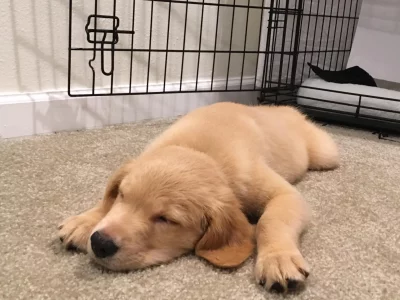Bringing home a new puppy is an exciting and joyful experience. However, it also comes with its fair share of challenges, such as potty training and teaching them to feel secure in their new environment. One valuable tool that can greatly assist in this process is crate training. Crate training provides a safe and cozy space for your furry friend while also aiding in housebreaking and preventing destructive behaviors. In this blog, we will explore the art of crate training your puppy, offering guidance and tips for a successful experience.
- Choosing the Right Crate: The first step in crate training is selecting the appropriate crate for your puppy. Ensure that the crate is spacious enough for them to stand, turn around, and lie down comfortably. Opt for a crate with a removable divider that can be adjusted as your puppy grows. Consider the material, such as plastic or wire, based on your pup's needs and your personal preferences.
- Introducing the Crate: To create a positive association, introduce the crate gradually. Place it in a central area of your home with the door open, enticing your puppy with treats, toys, and their favorite blanket. Encourage exploration and reward them for voluntarily entering the crate. This will help them associate the crate with positive experiences.
- Establishing a Routine: Consistency is key when crate training. Establish a regular routine for your puppy's meals, playtime, and potty breaks. Take them outside to relieve themselves before placing them in the crate and provide ample exercise to help them expend energy. A tired puppy is more likely to settle down calmly in the crate.
- Gradual Crate Time: Start with short periods of crate time, gradually increasing the duration as your puppy becomes more comfortable. Begin by closing the door for a few minutes while you're present, gradually extending the time. Use positive reinforcement techniques like treats, praise, and soothing words to reassure your pup and make crate time enjoyable.
- Avoiding Negative Associations: Never use the crate as a form of punishment. The crate should be a safe haven, not a place for reprimand. Avoid forcing your puppy into the crate or leaving them alone for extended periods without proper preparation. Make their crate a positive and inviting space that they willingly enter on their own.
- Nighttime Crating: During the nighttime, place the crate near your bed to ease any separation anxiety. You can also leave a shirt with your scent to provide comfort. Be prepared for occasional whining or barking, but avoid giving in to their demands. Gradually increase the distance between the crate and your bed over time.
- Gradual Freedom: As your puppy demonstrates good behavior and bladder control, you can gradually increase their freedom by allowing supervised time outside the crate. This helps them build trust and confidence while maintaining a sense of boundaries and safety.
- Consistency and Patience: Remember, crate training is a gradual process that requires patience and consistency. Each puppy is unique, and the time it takes for them to adjust to crate training may vary. Celebrate small victories, be patient with setbacks, and always approach the process with a positive mindset.
Conclusion: Crate training is an effective method to provide structure, security, and facilitate the overall well-being of your puppy. When done with care, patience, and positive reinforcement, crate training can lead to a harmonious living environment for both you and your four-legged friend. Embrace the art of crate training, and watch as your puppy grows into a well-adjusted and disciplined companion.


